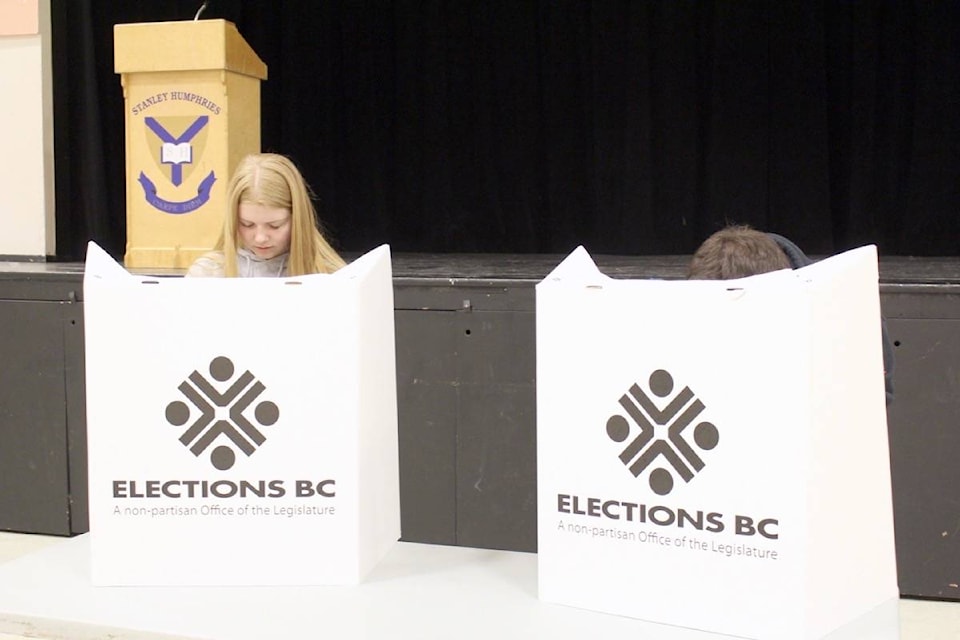It was a close race as British Columbians cast ballots in the provincial election earlier this month.
In one riding, the front runner was ahead of the next competitor by just nine votes on Election Night. A few votes could have made a big difference.
Despite this close race, many who could have participated did not do so. The voter turnout provincewide was just 57 per cent.
Consider this number. More than two out of five eligible voters did not cast ballots in this election.
Even in federal elections, the voter turnout is low.
The 2015 federal election had a turnout of 68.5 per cent. Close to one in three of those eligible did not vote in the 2015 election.
And in 2011, the turnout was below 60 per cent.
Summerland’s municipal elections draw even lower participation levels.
The 2014 election had a 51 per cent participation rate, even though the mayoral race was close. Mayor Peter Waterman defeated Roch Fortin by just 77 votes, and of the five candidates, four finished within 200 votes of each other.
Even a slight change in voter turnout could have altered the outcome of this election.
And in 2011, when Mayor Janice Perrino was in by acclamation, only 36.1 per cent of voters cast their ballots.
Governments at every level make decisions which will affect us all. Elections are a way to determine who will make those decisions.
Some have suggested the low voter turnout numbers are signs of apathy.
Too many Canadians do not care enough to stop at a polling station and mark a ballot.
Mandatory voting has been suggested by some as a way to improve voter turnout numbers.
However, there are reasons people will choose not to vote in an election. For some, it’s a matter of religious principles or personal conscience. Others are in poor health, too ill to participate in an election.
It is also possible the low voter turnout is a way for voters to show displeasure with every choice on the ballot.
If a voter sees serious flaws with each of the choices, it may be easiest to abstain from the entire process.
There are times when a voter will find a party’s platform appealing, but have doubts about the local candidate’s ability to perform. It’s also possible that a voter will like a local candidate, but distrust the party leader or disagree with a key point in the platform.
Under our electoral system, a vote for a local candidate is also a vote for the party, the leadership and the platform. These elements cannot be separated.
This creates a dilemma for some voters.
Under our present electoral system, voters are asked to select one of the choices on the ballot.
If another option were added, a None Of The Above choice, it would allow voters to show their displeasure with all the choices before them.
Elections allow us to determine who should represent us at various levels of government.
The people’s voices deserve to be heard.
And if voters do not like any of the choices before them, they need to be able to show their displeasure with the options available to them.
Right now, there is no mechanism in place to allow them to make such a statement.
John Arendt is the editor of the Summerland Review.
